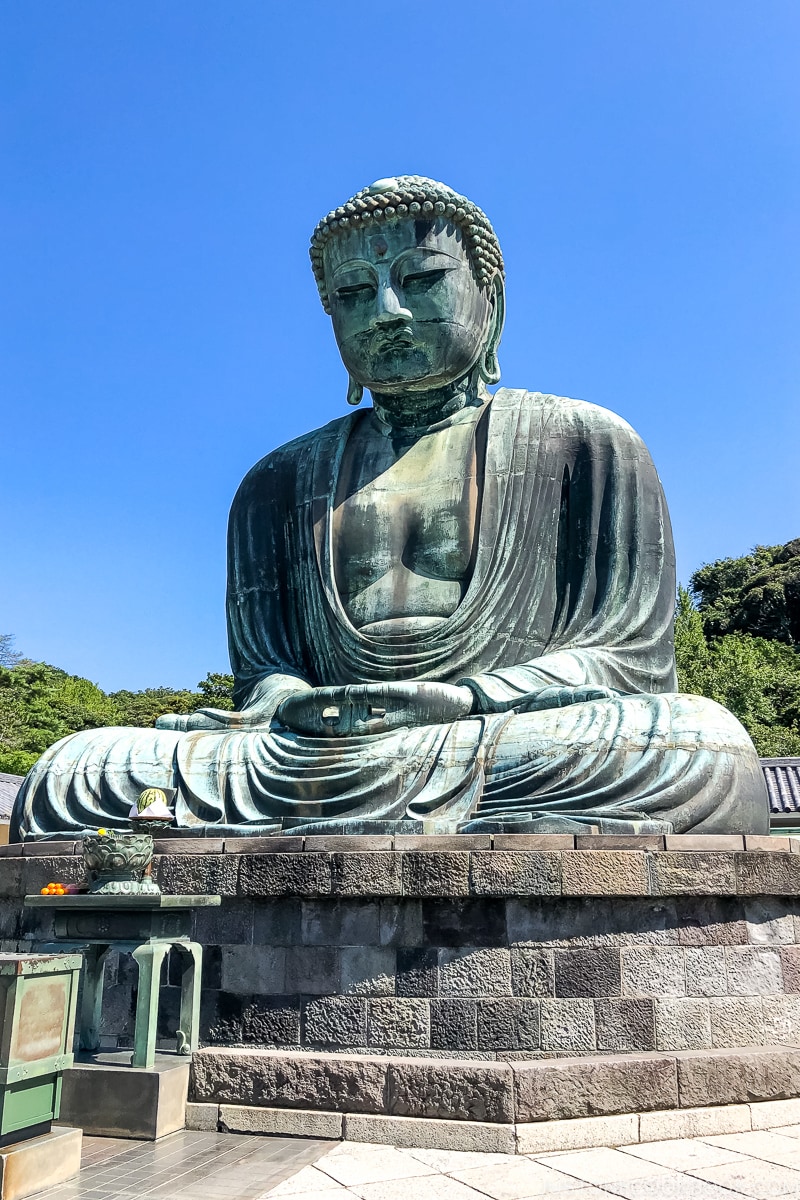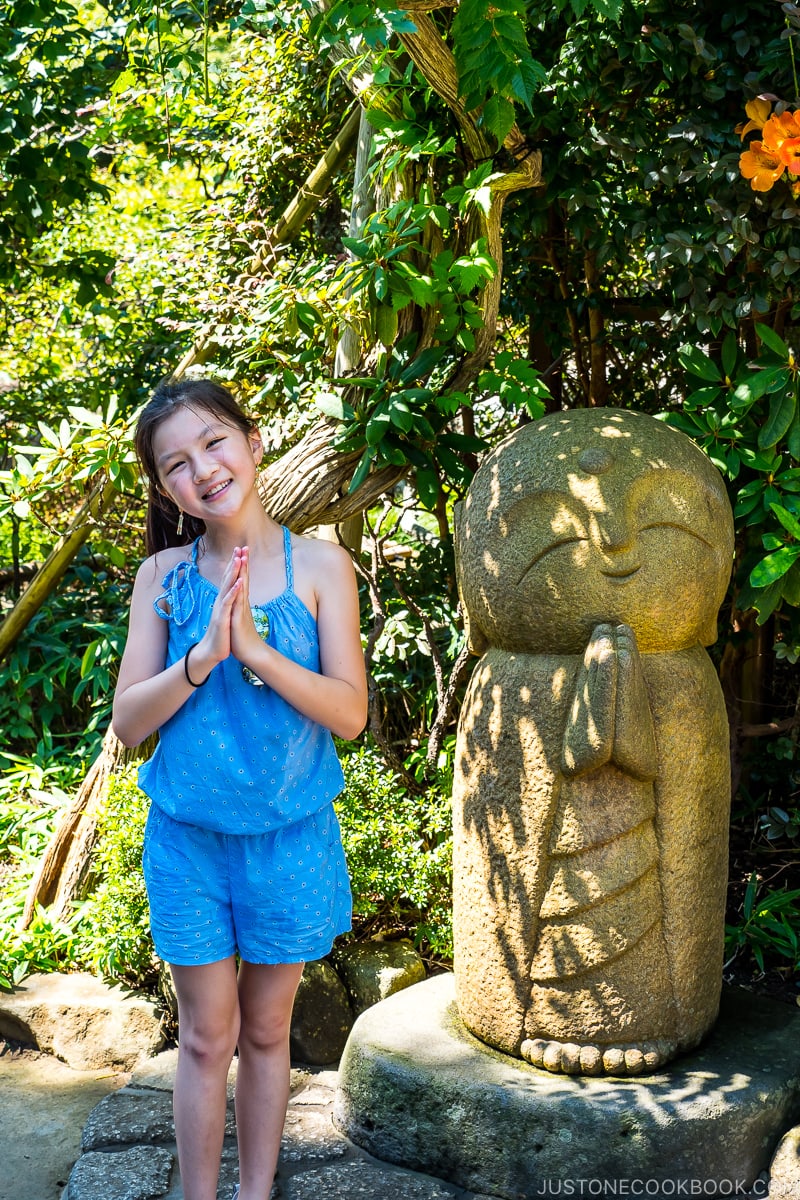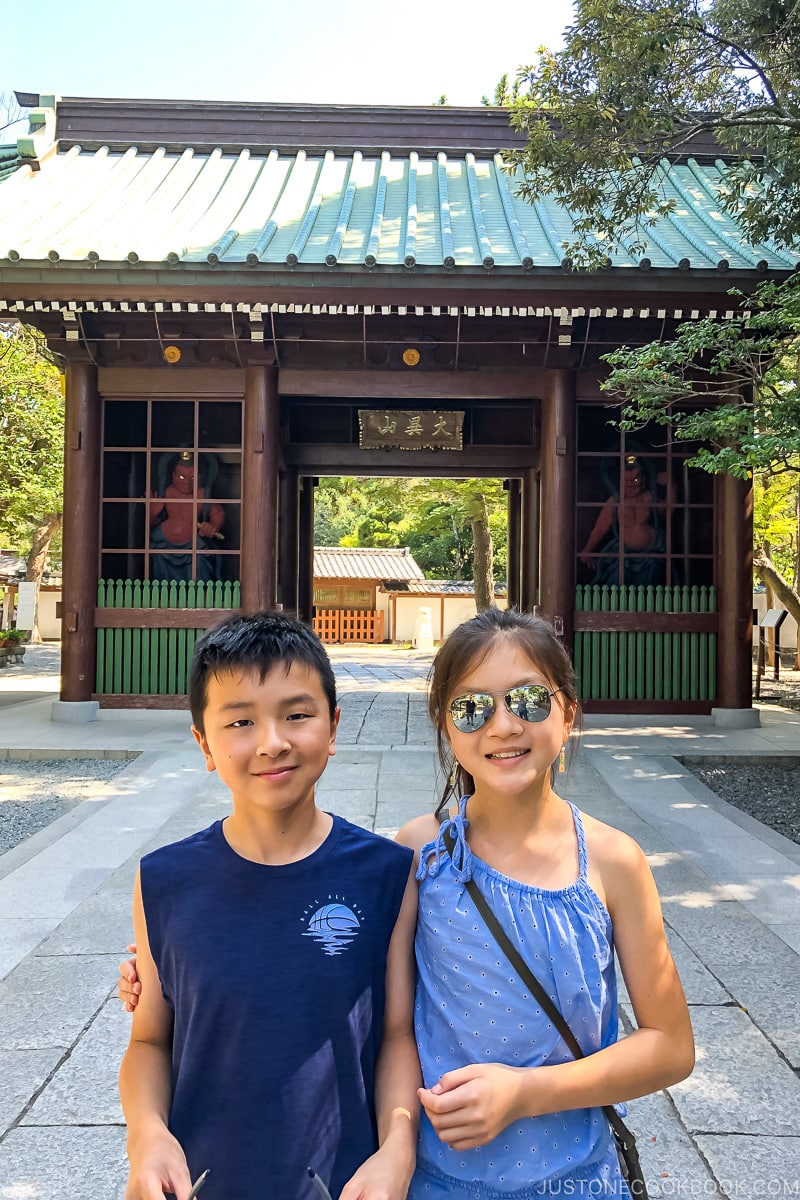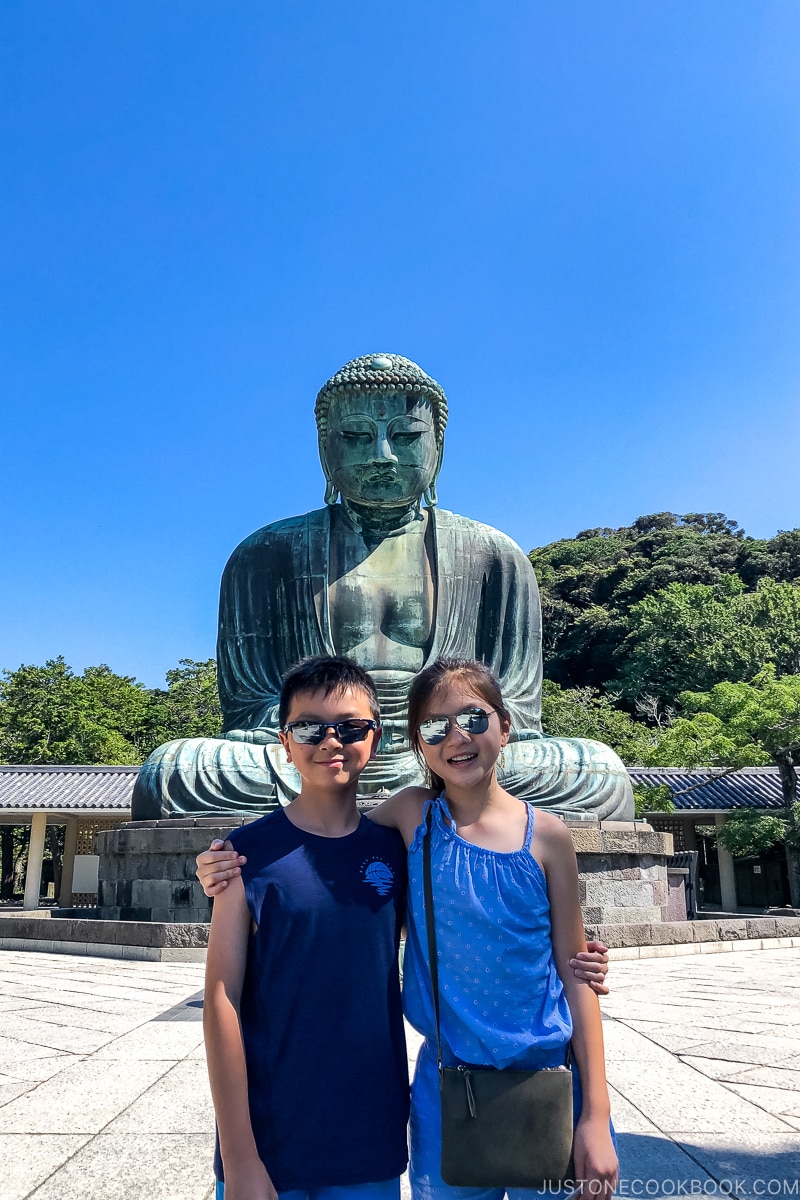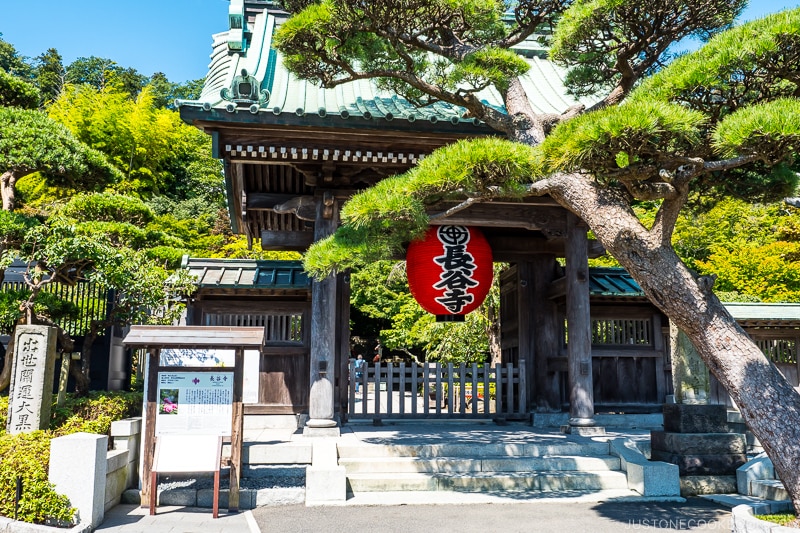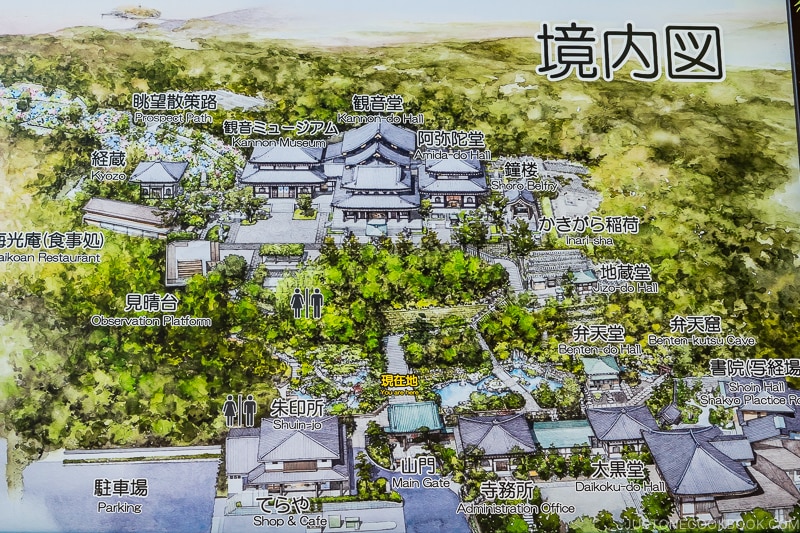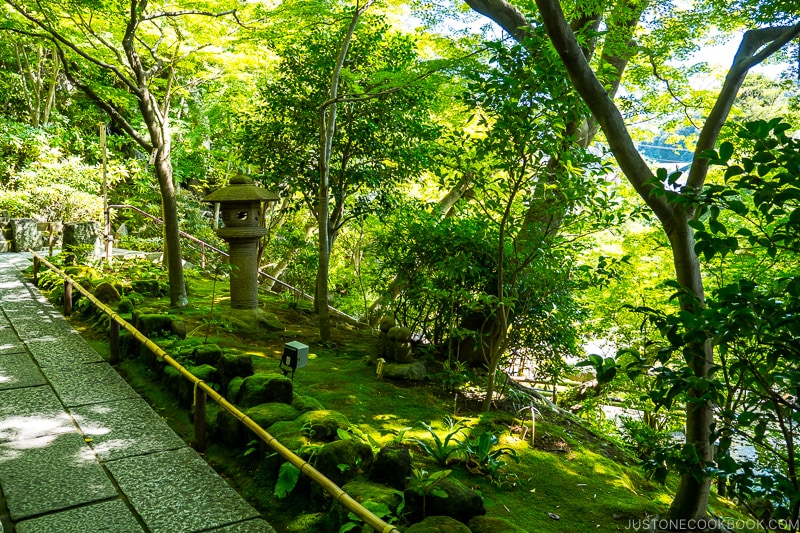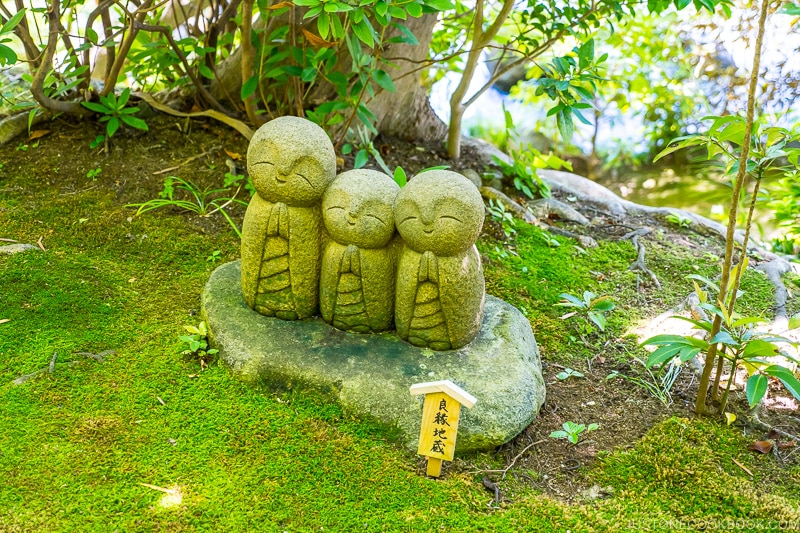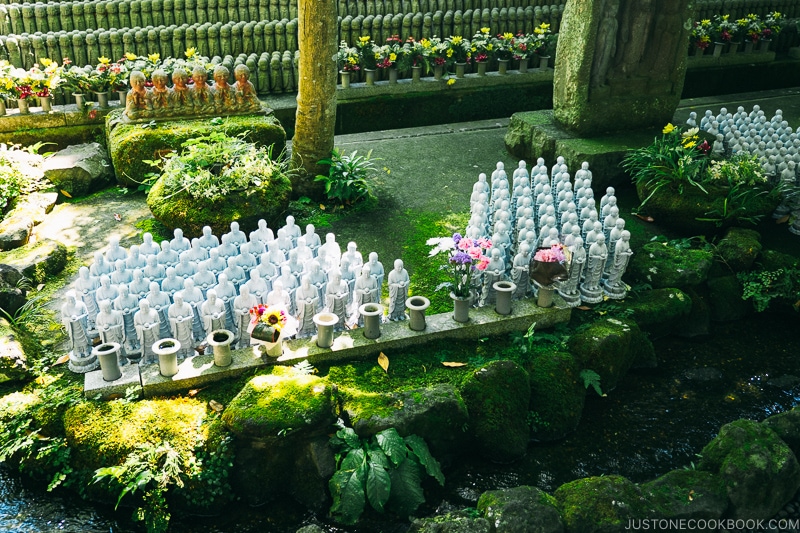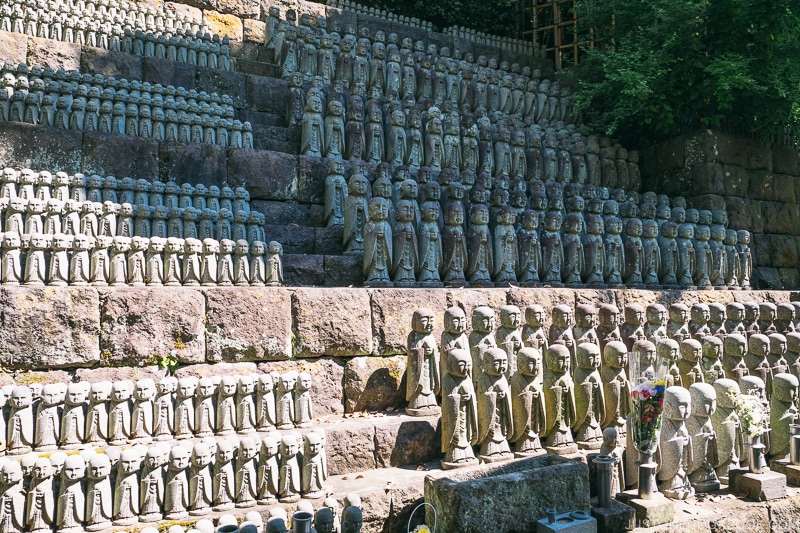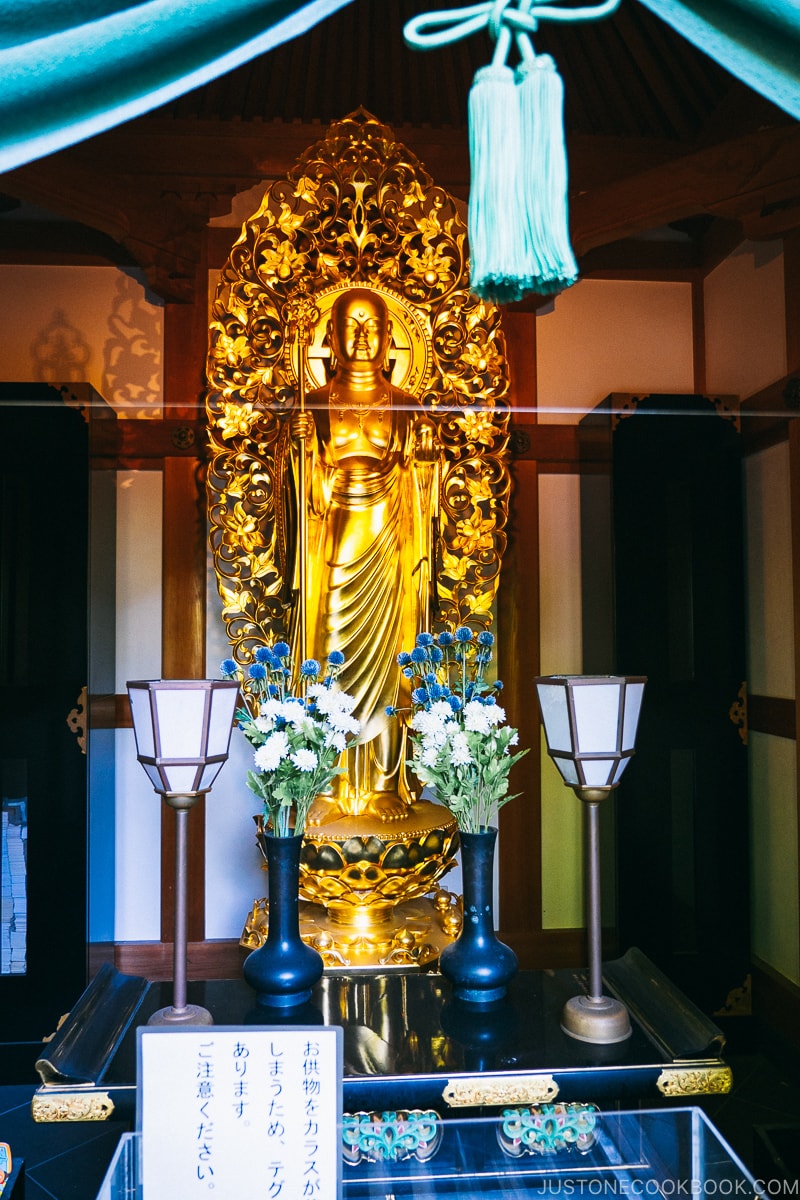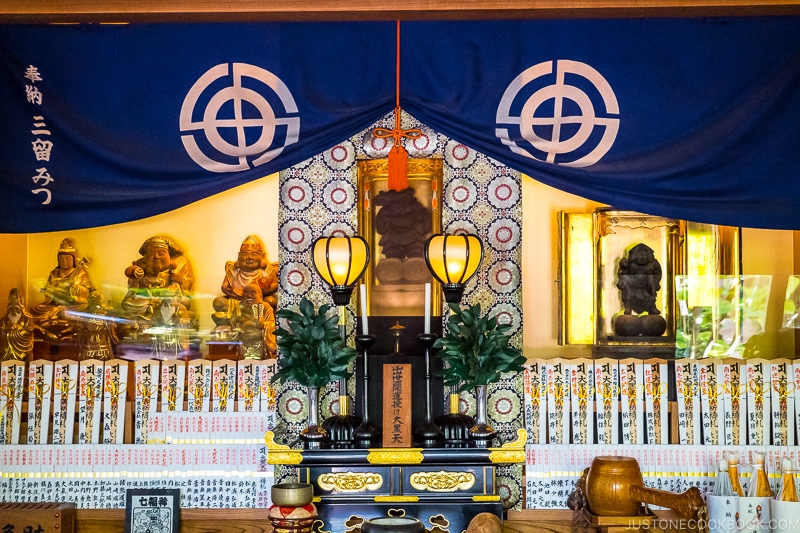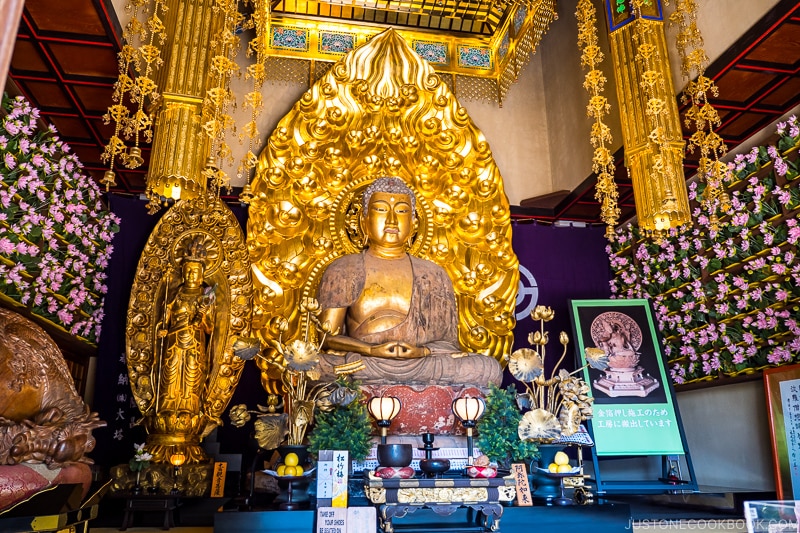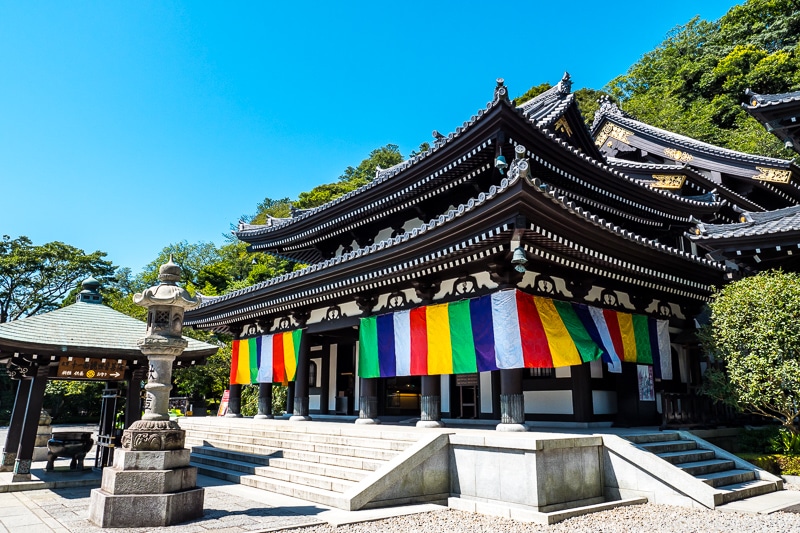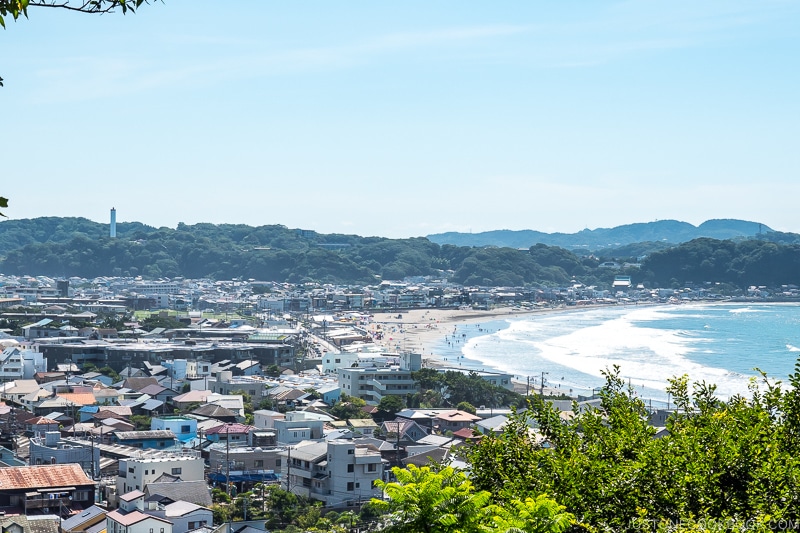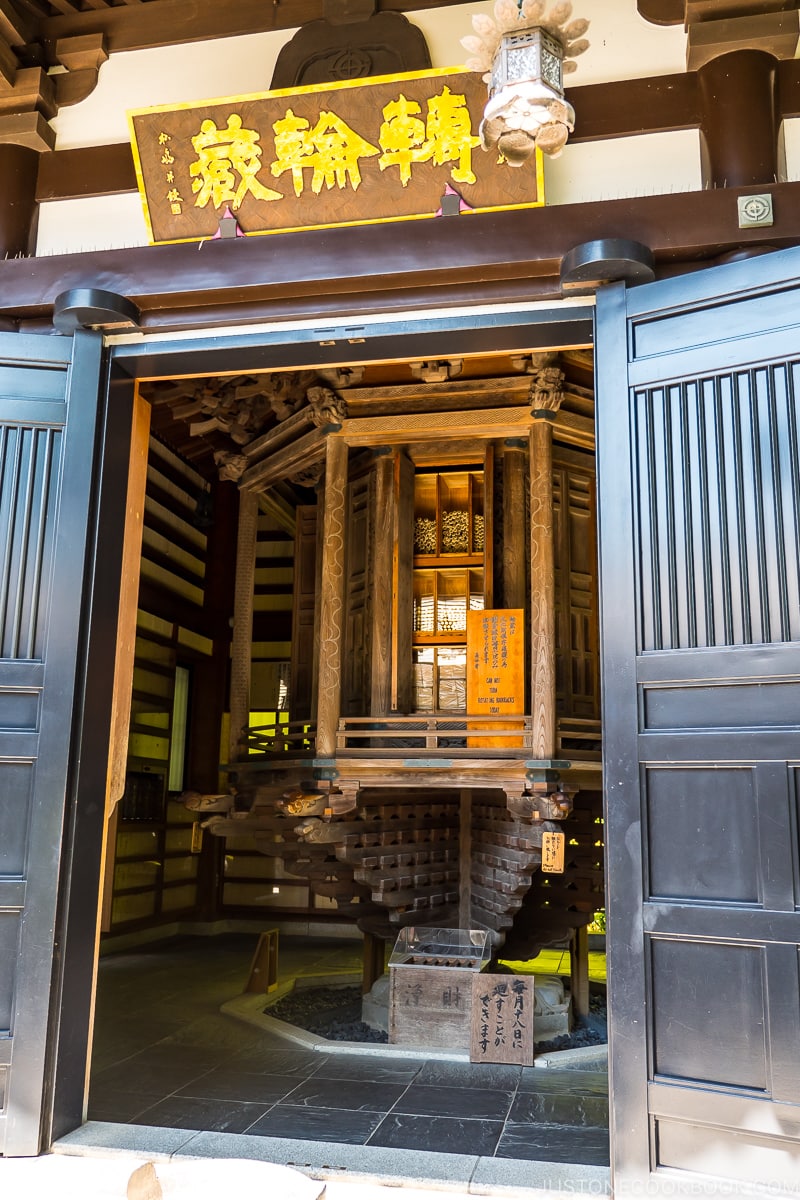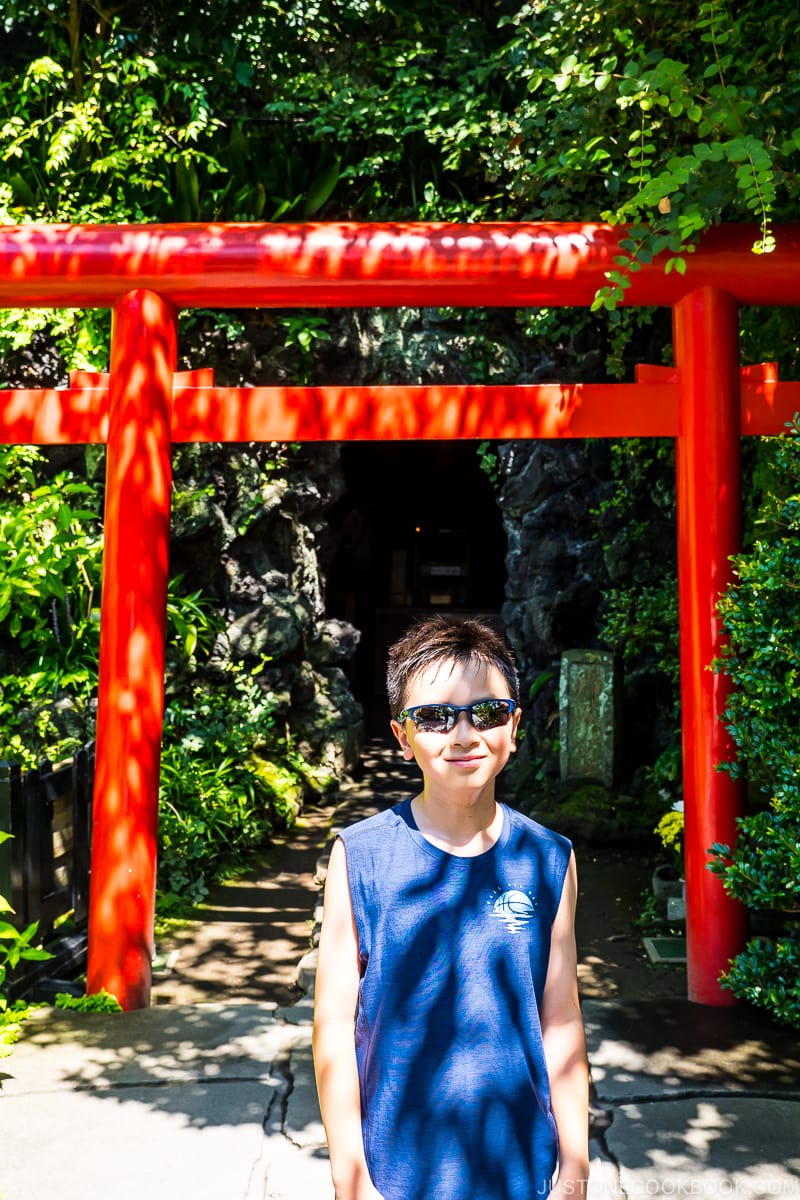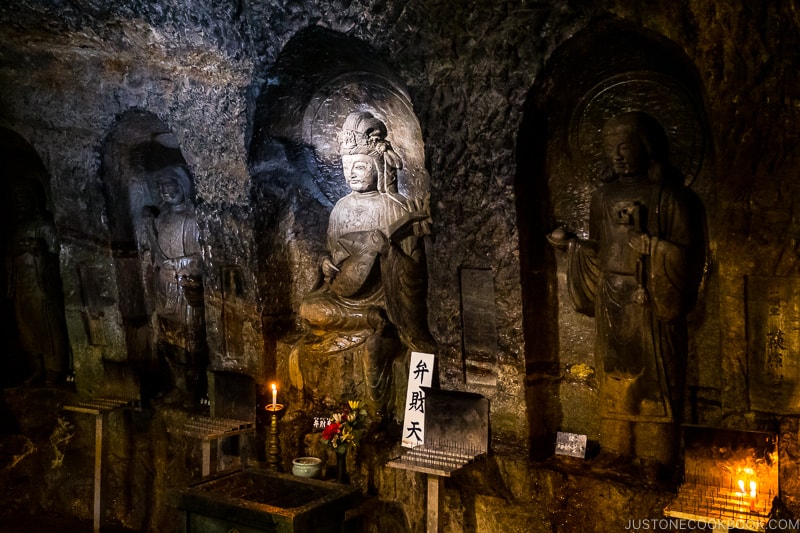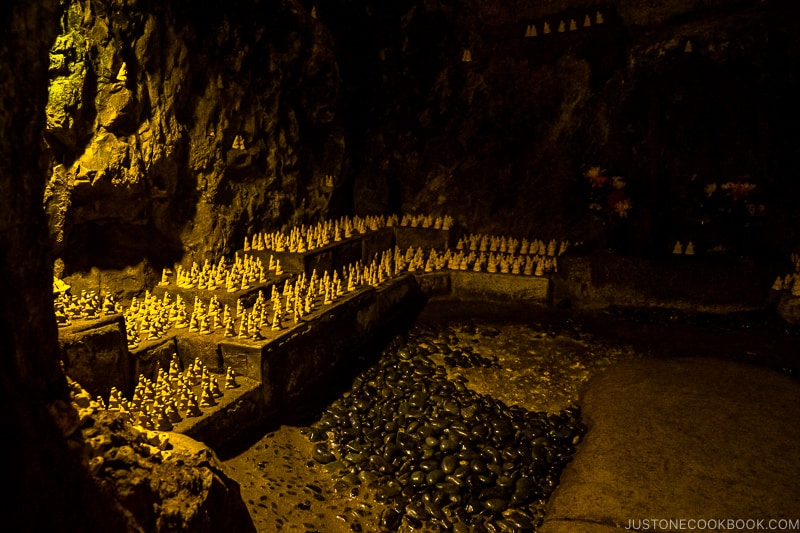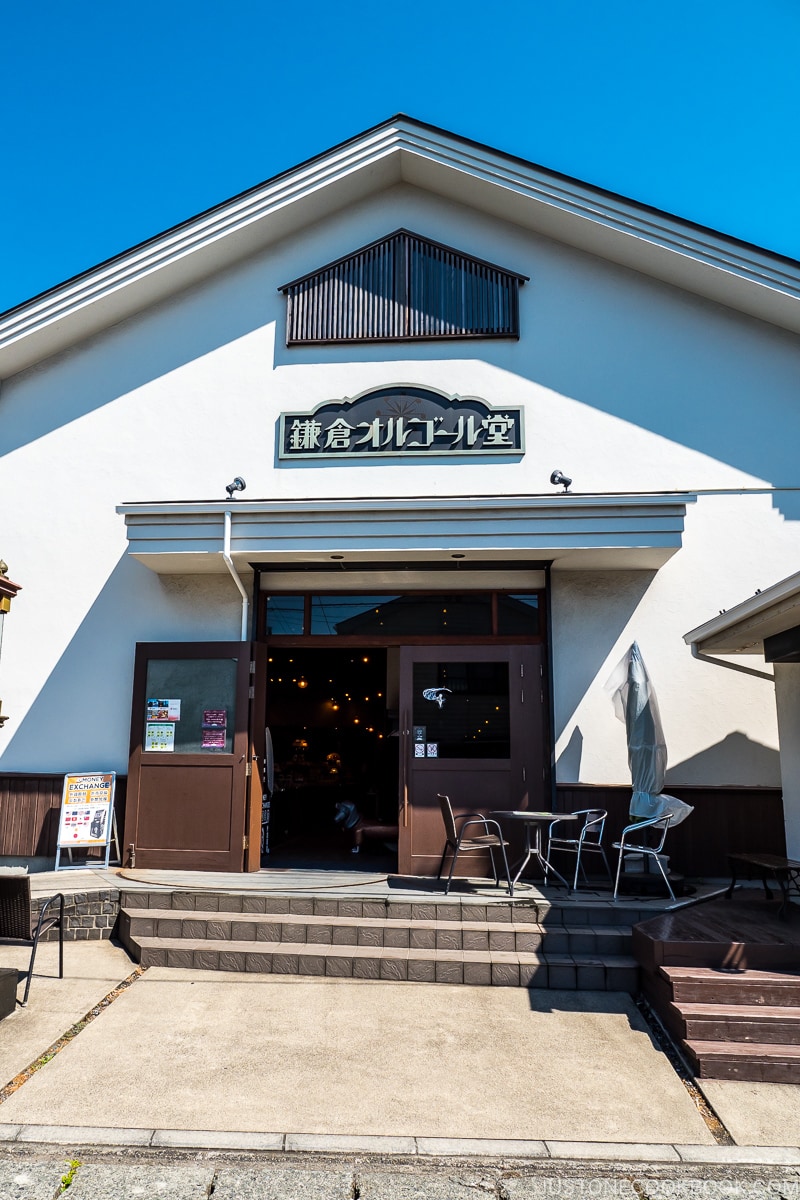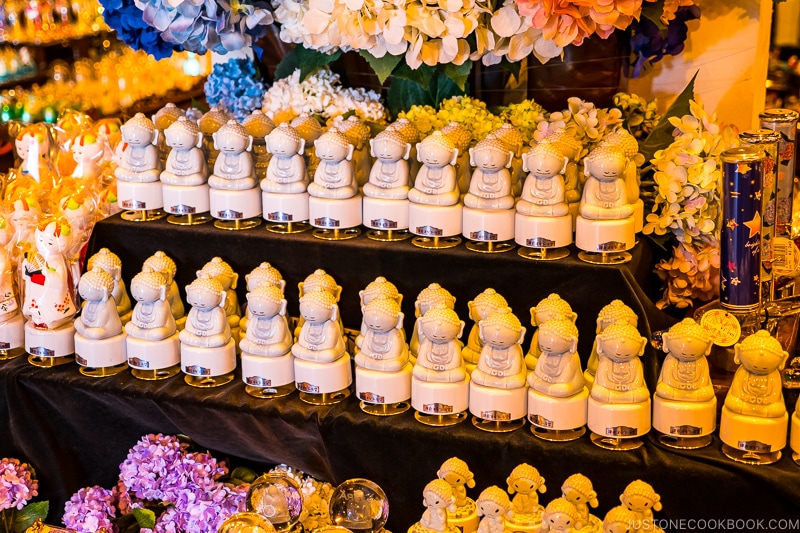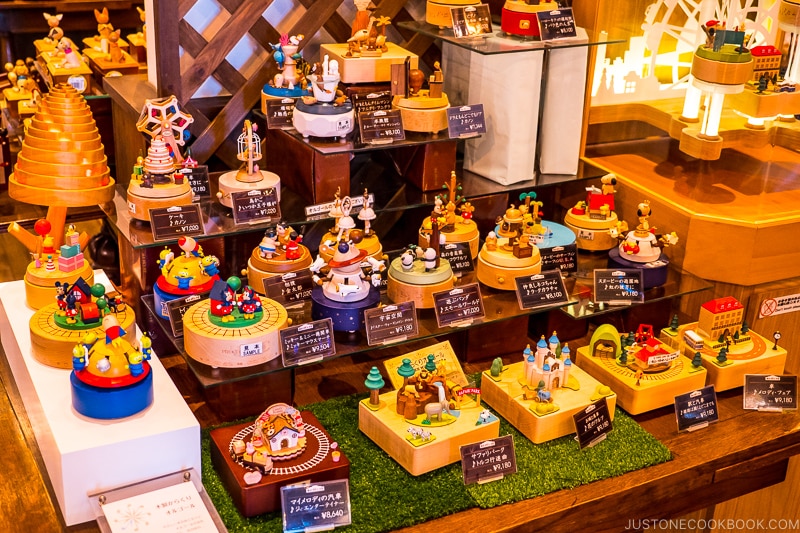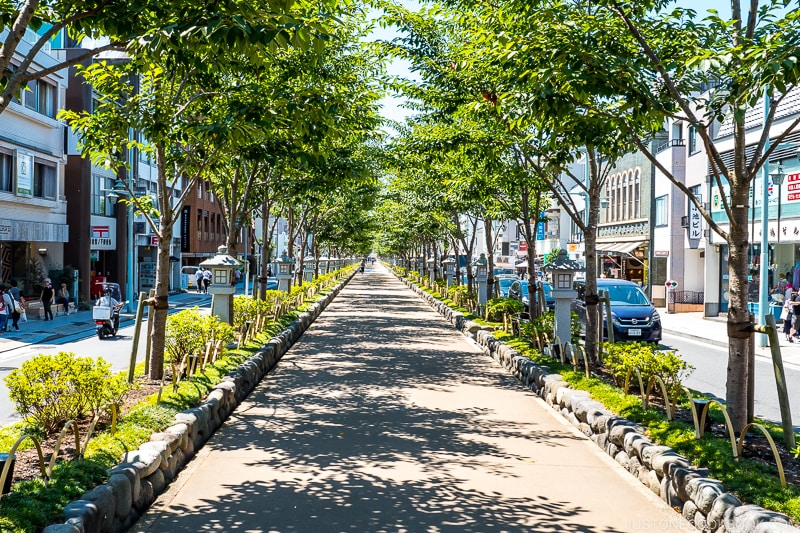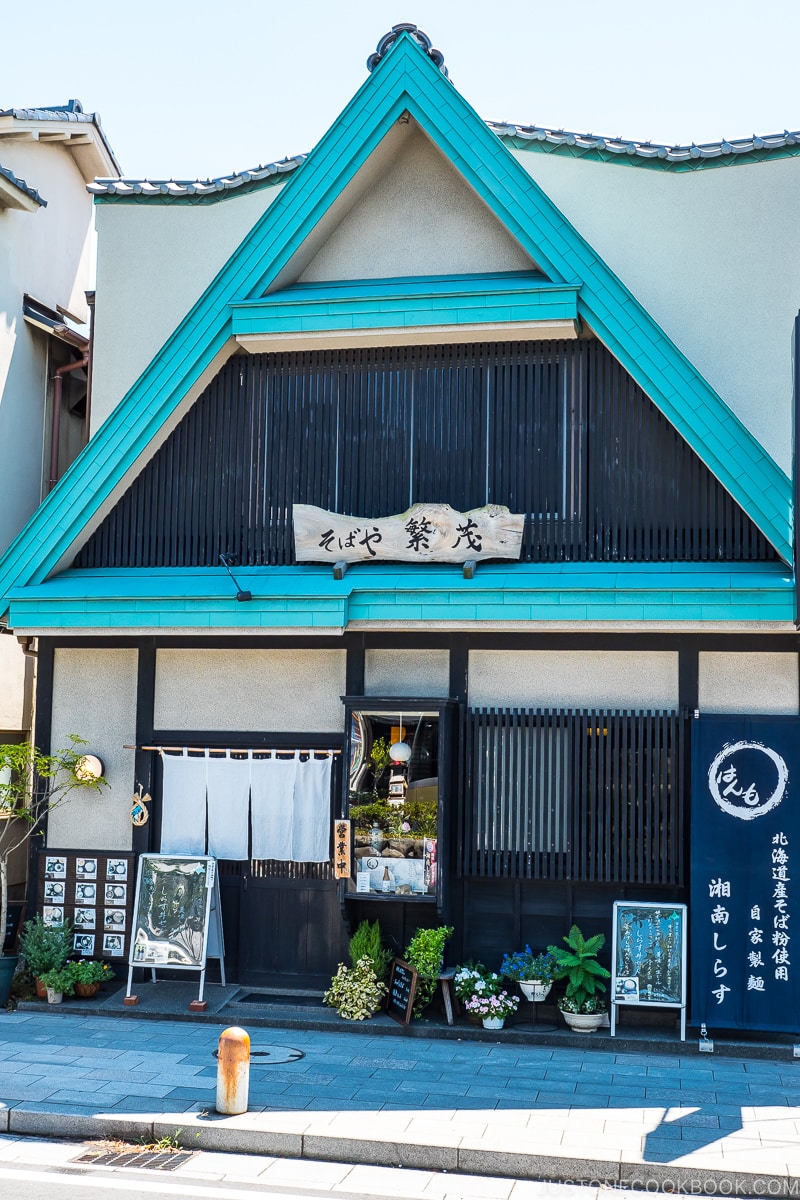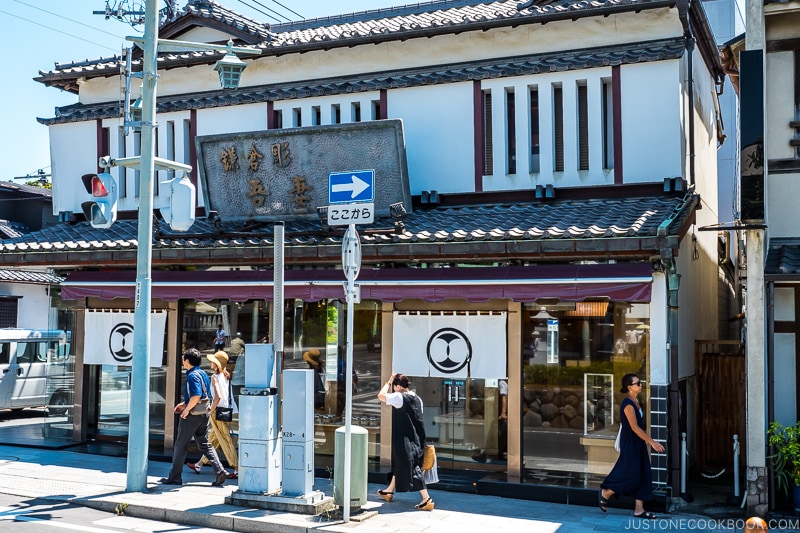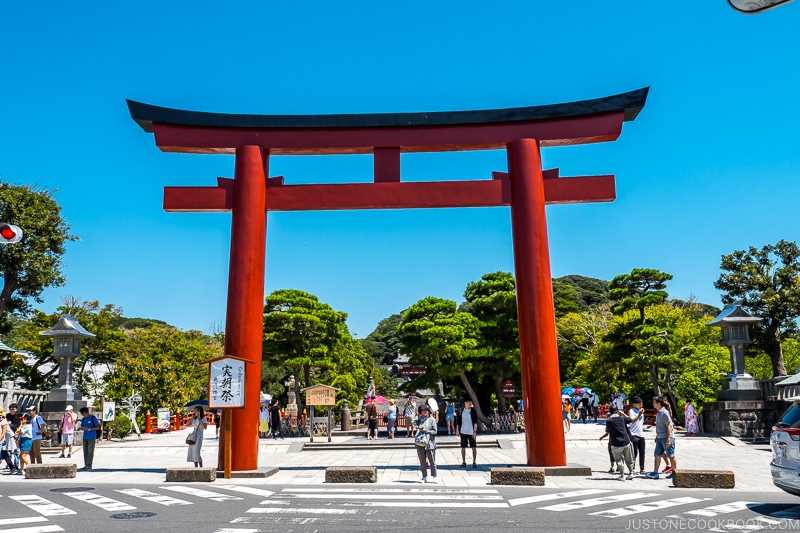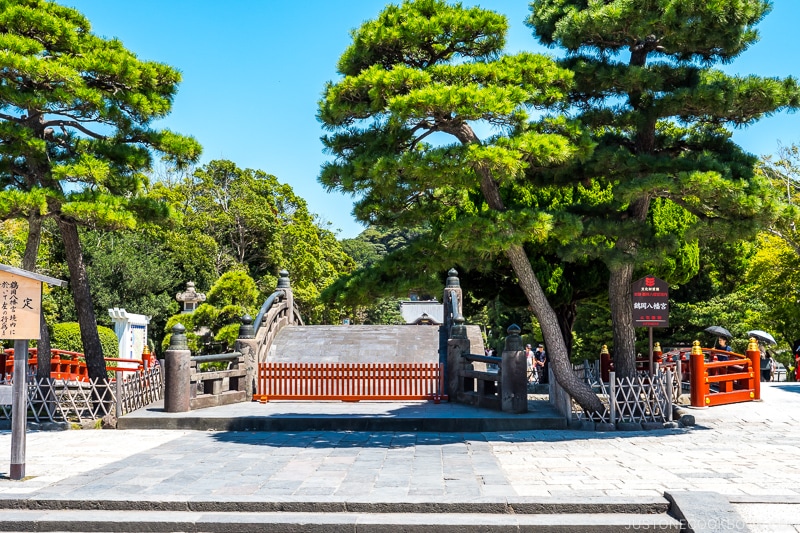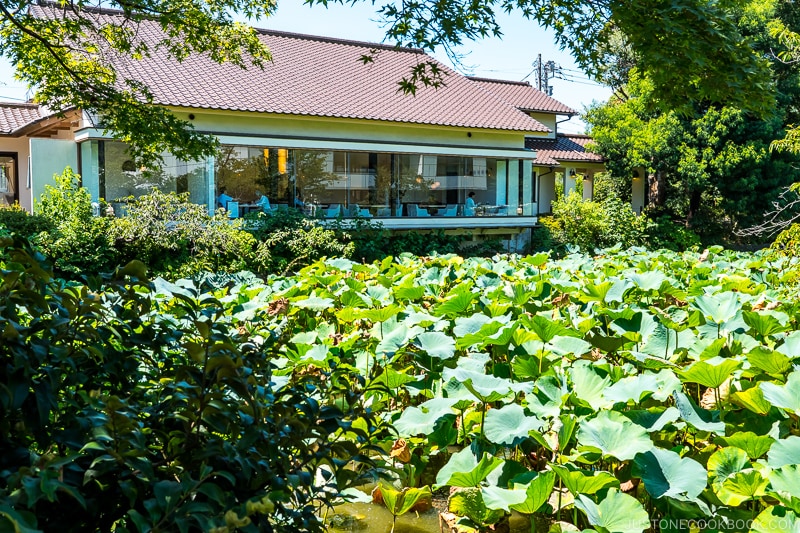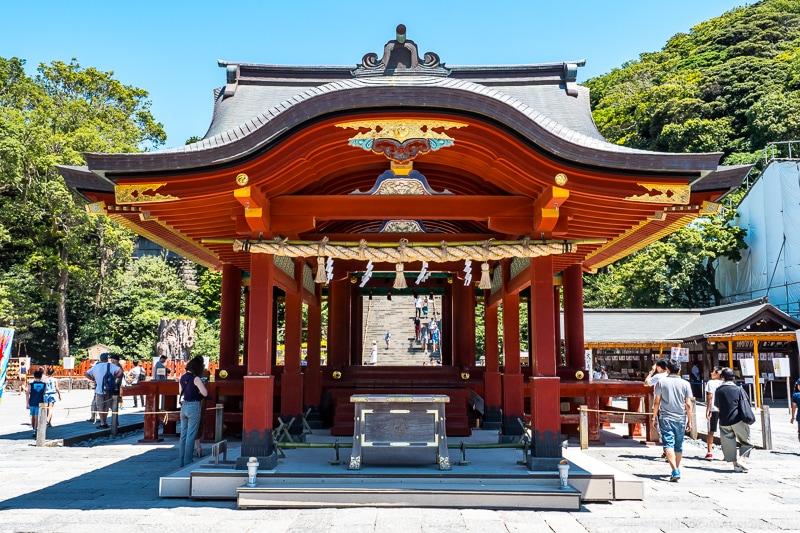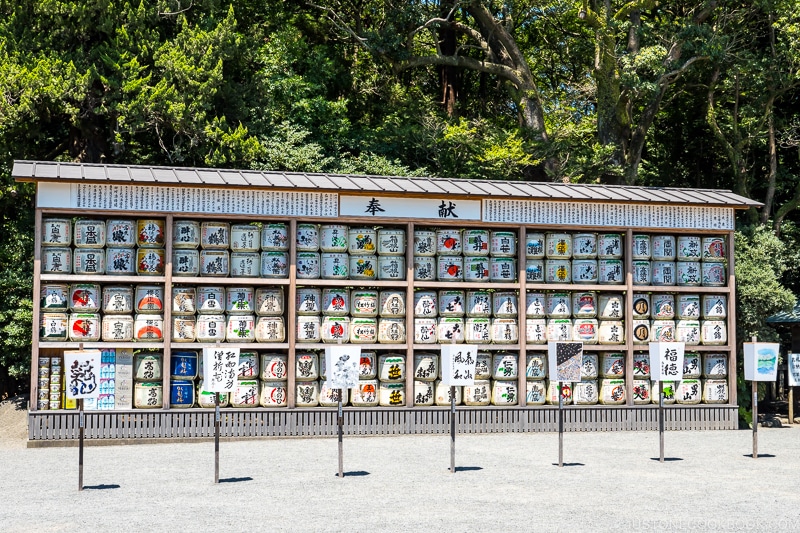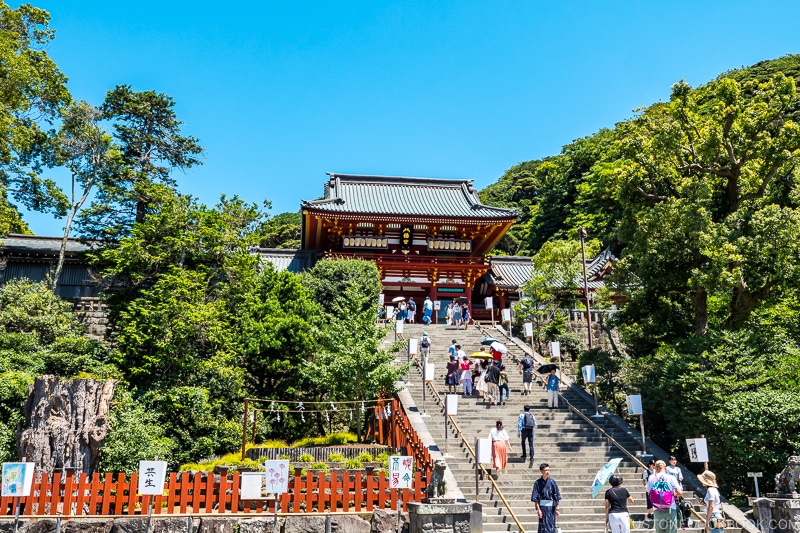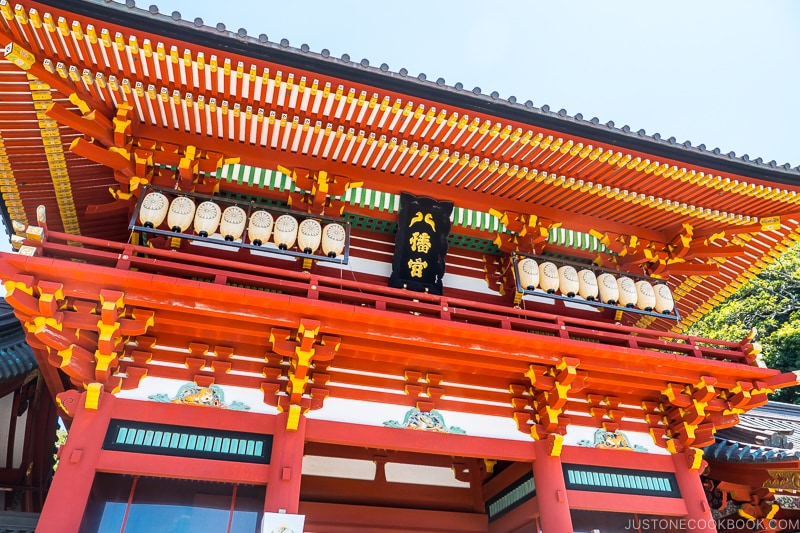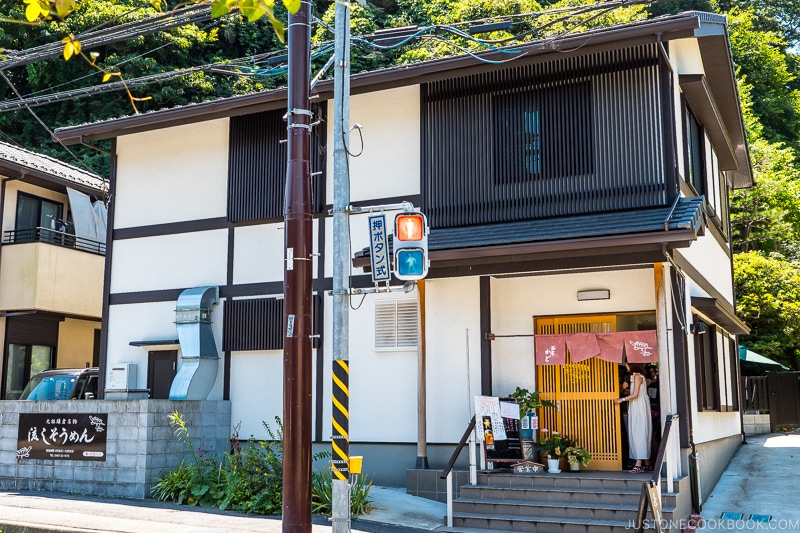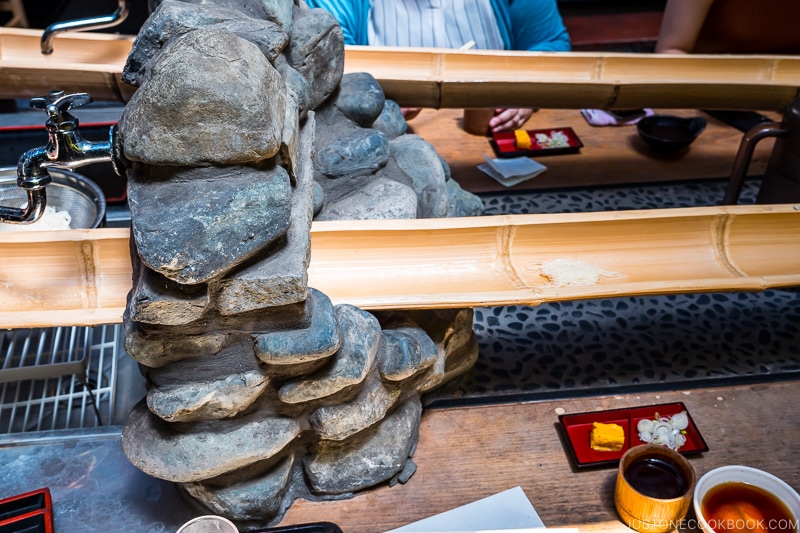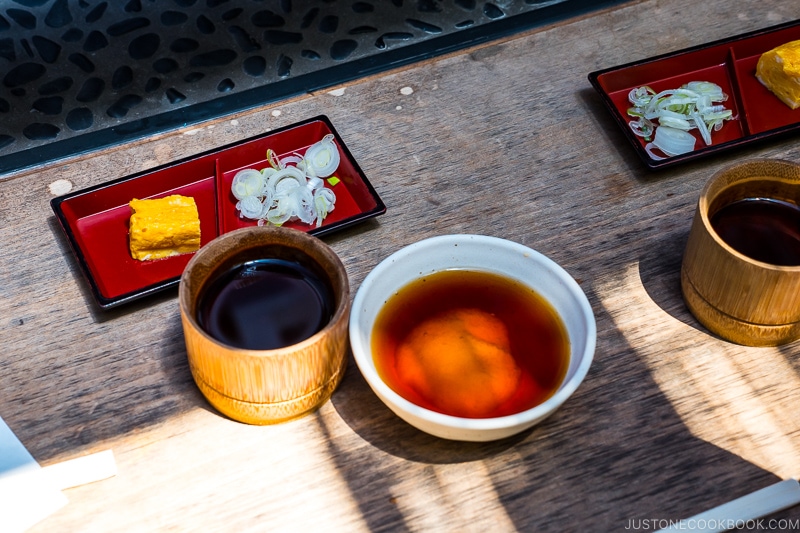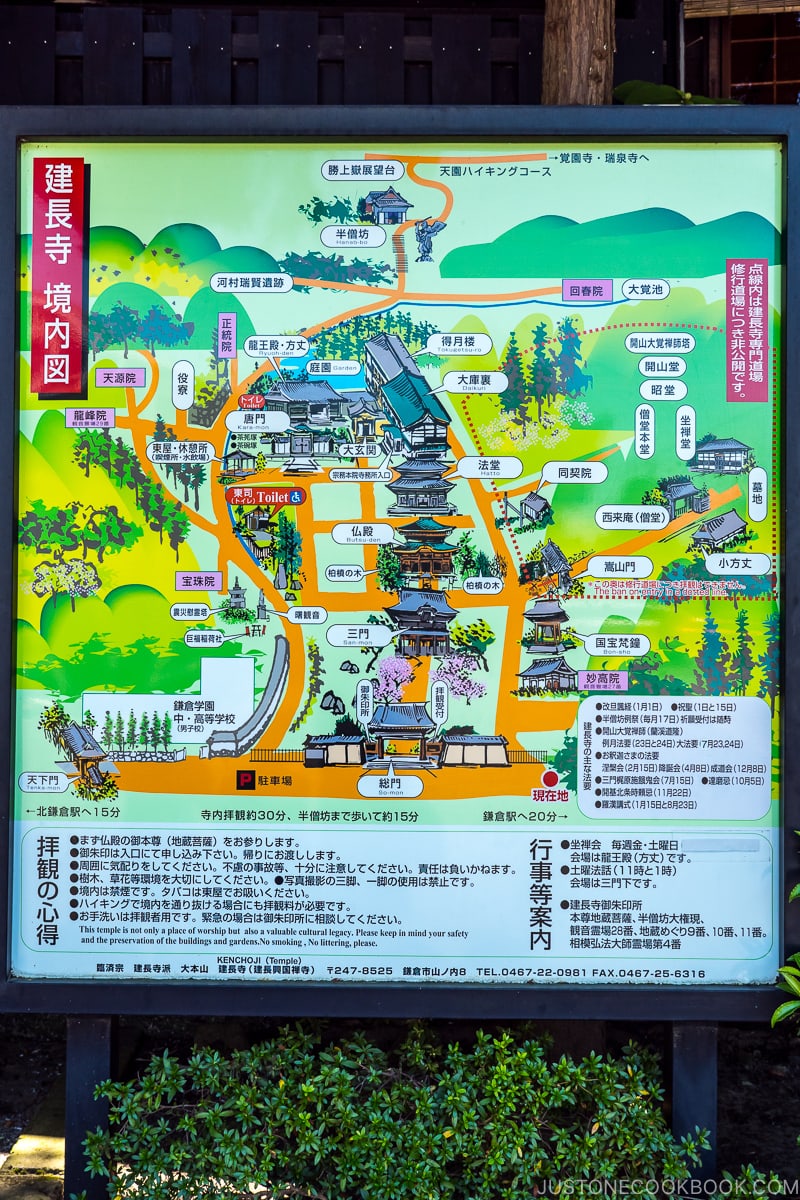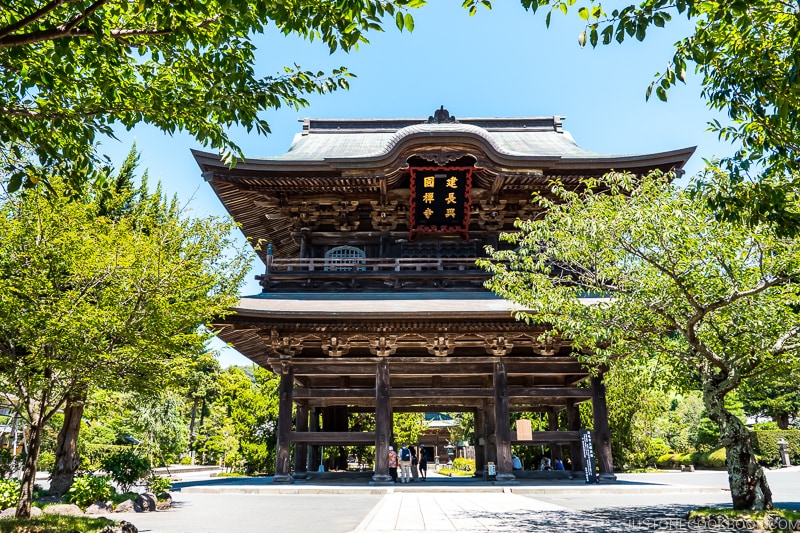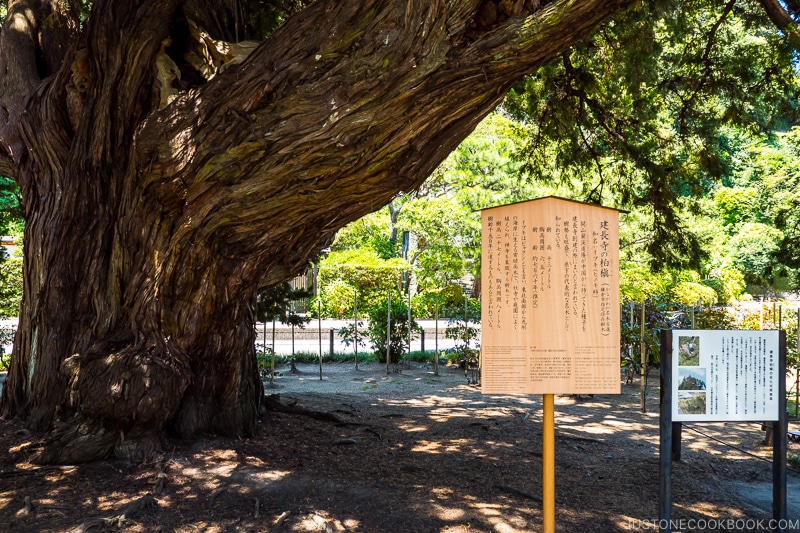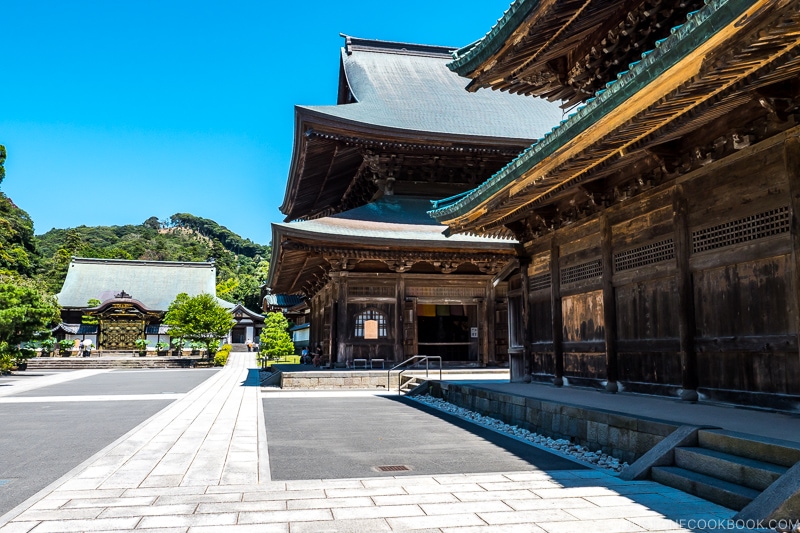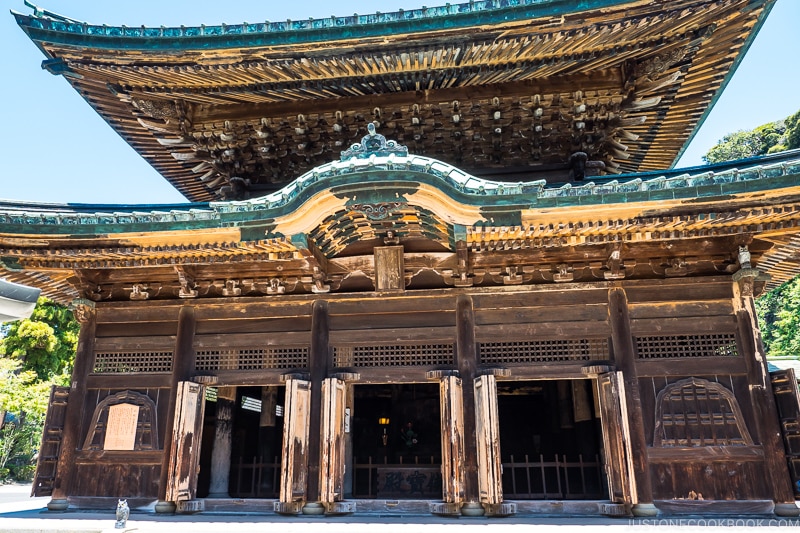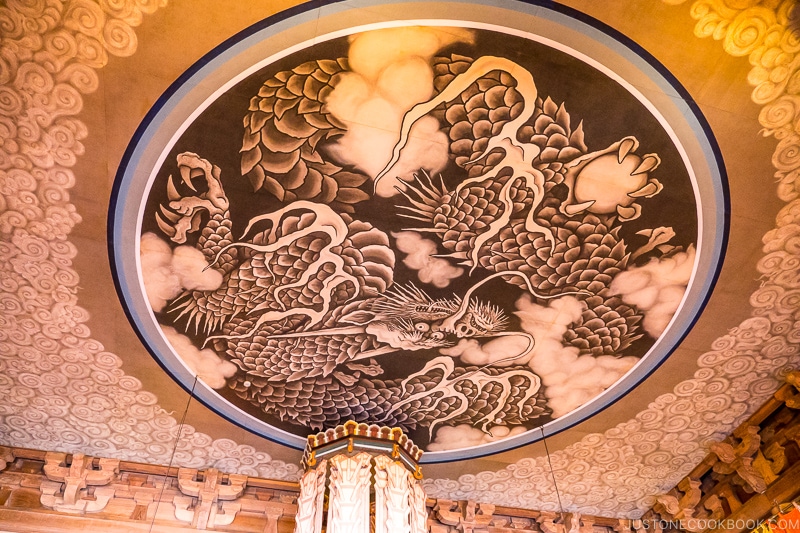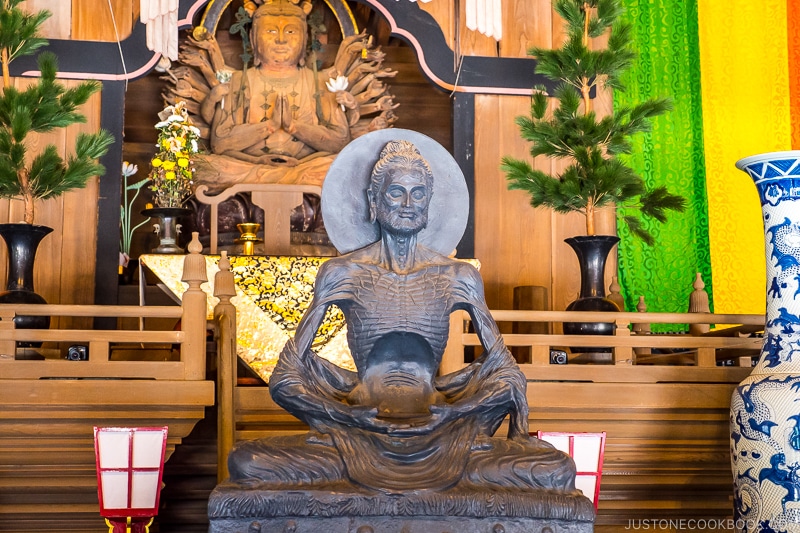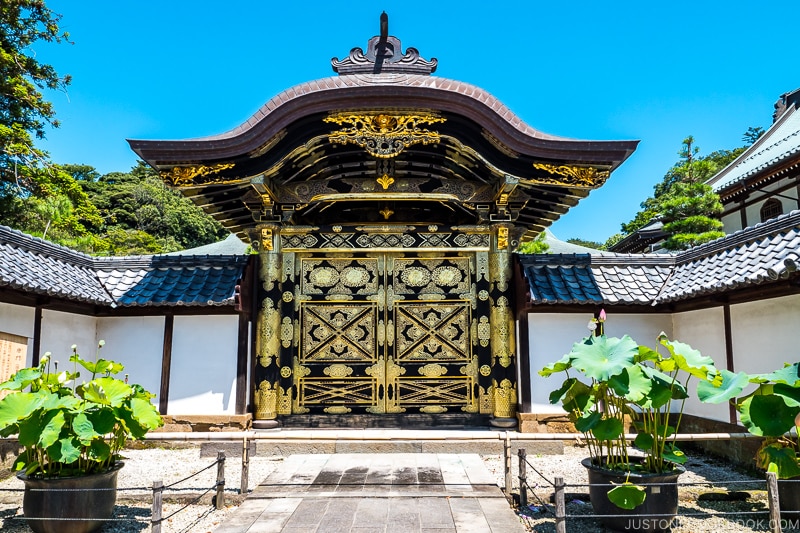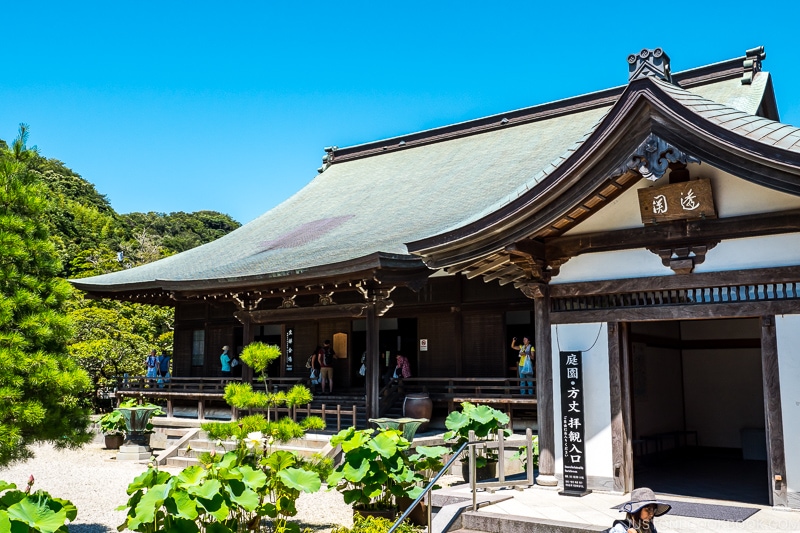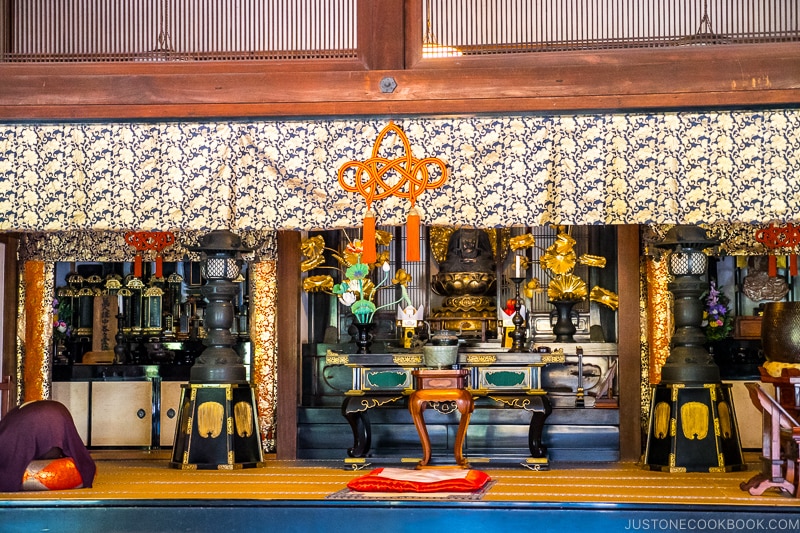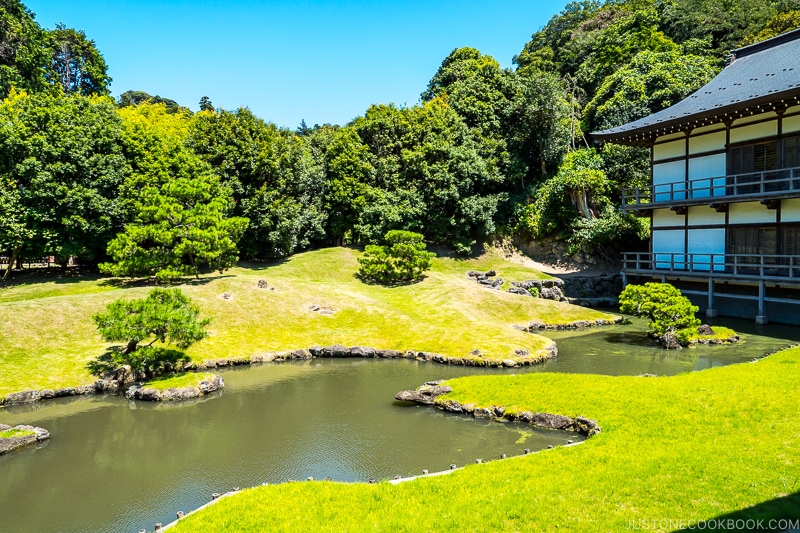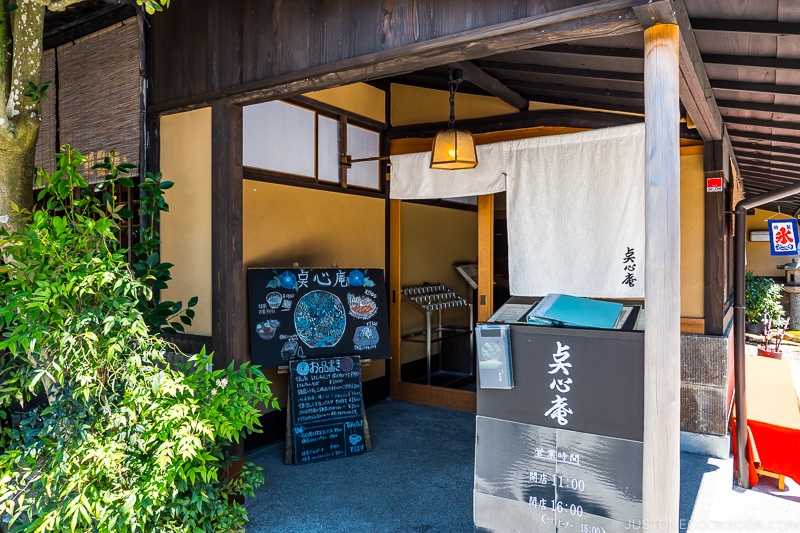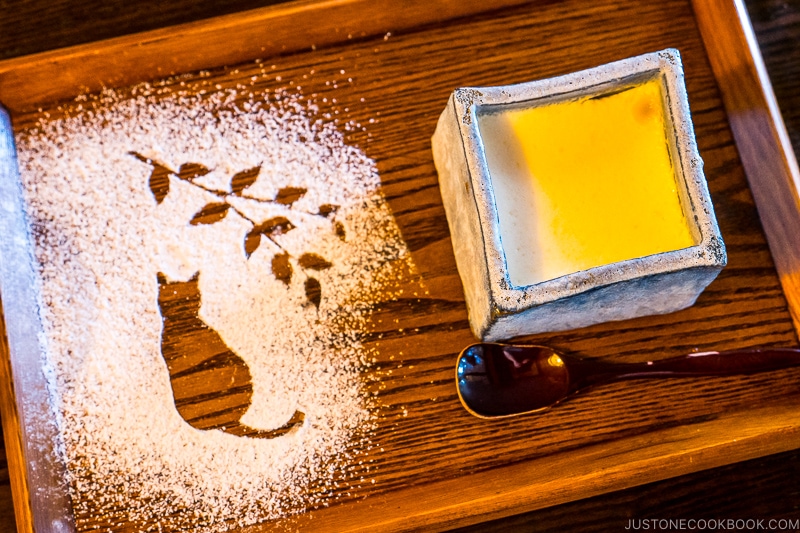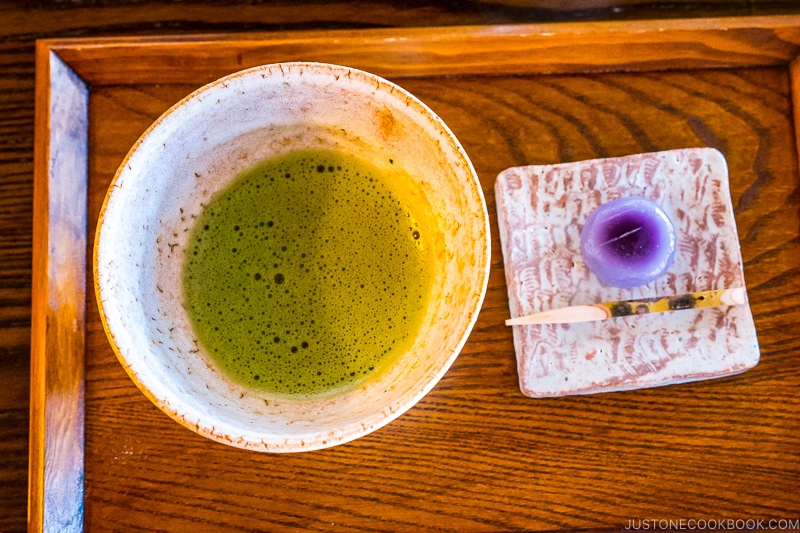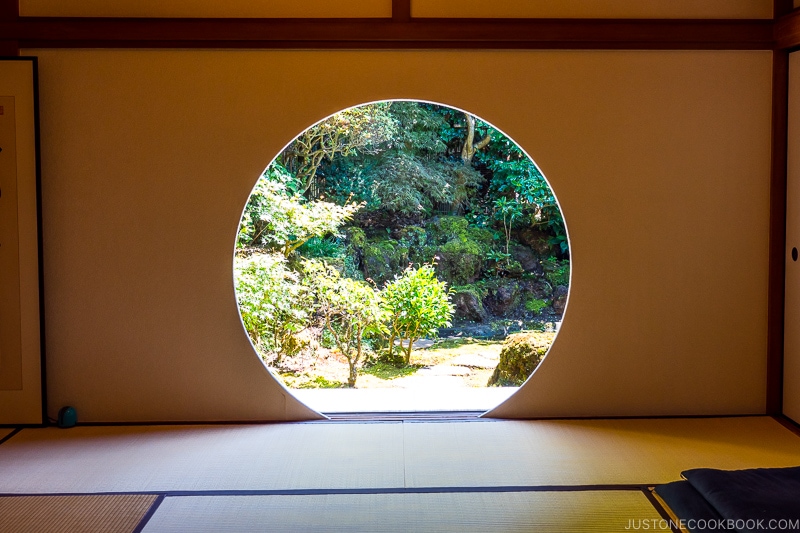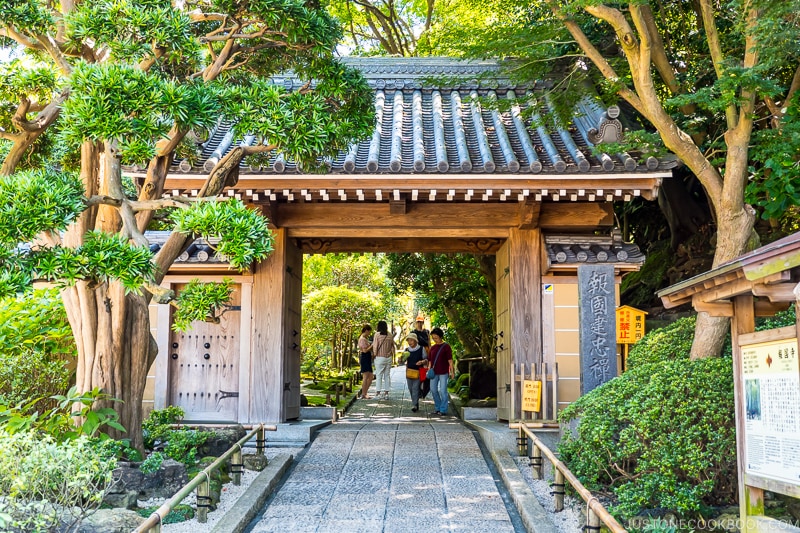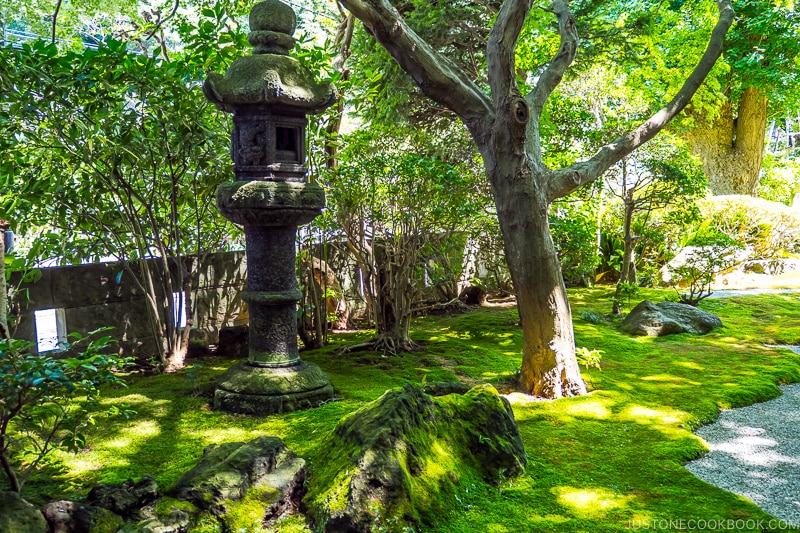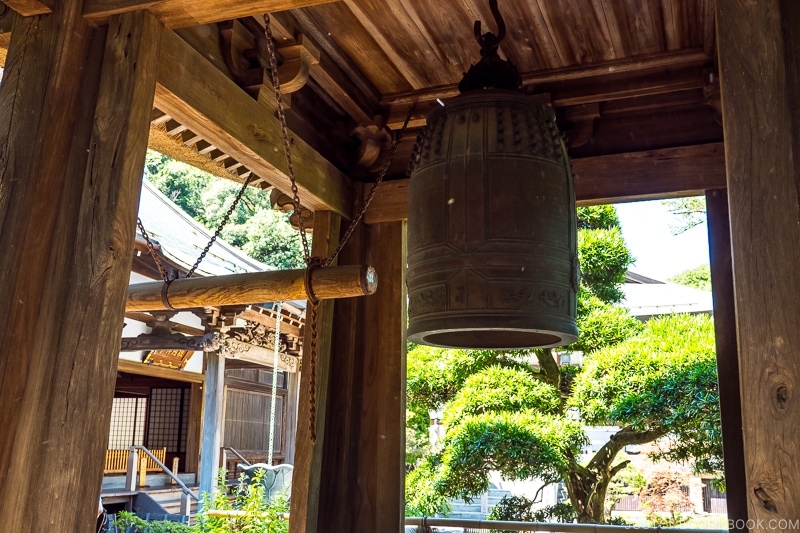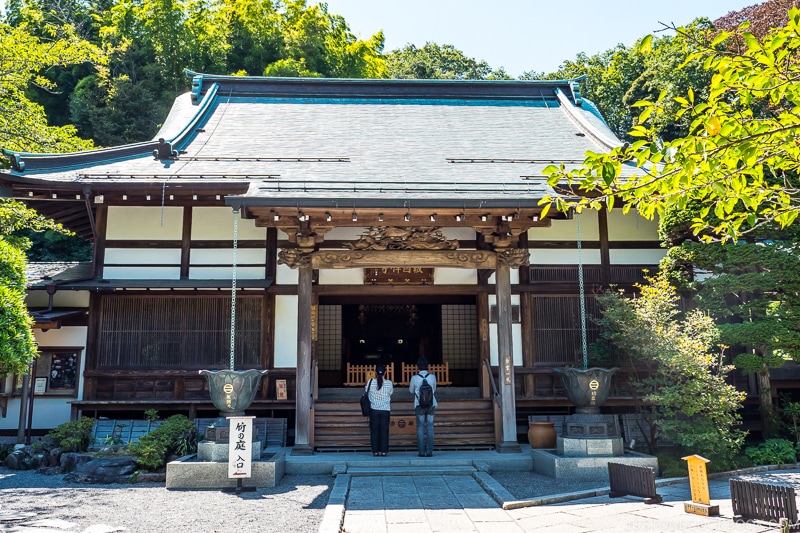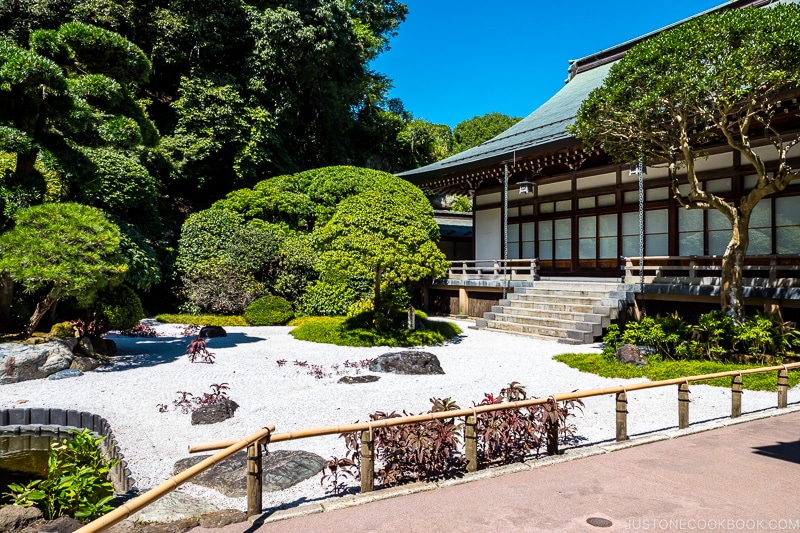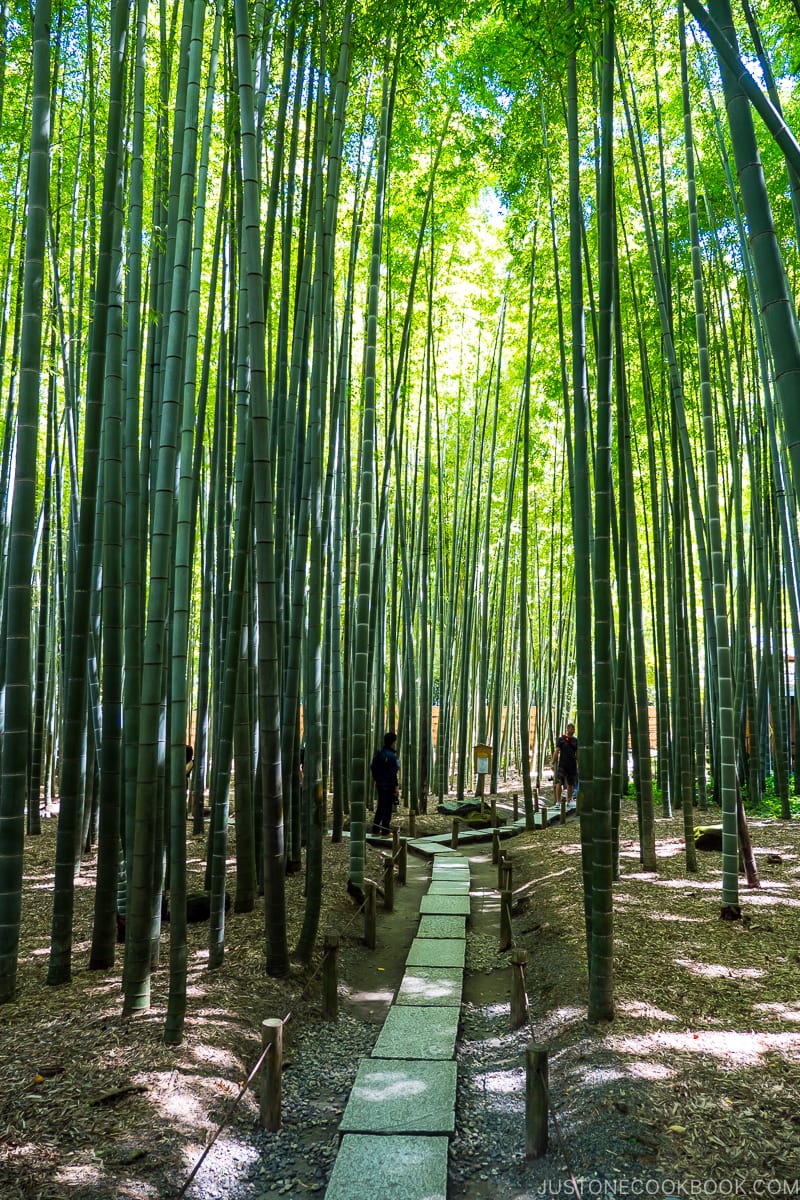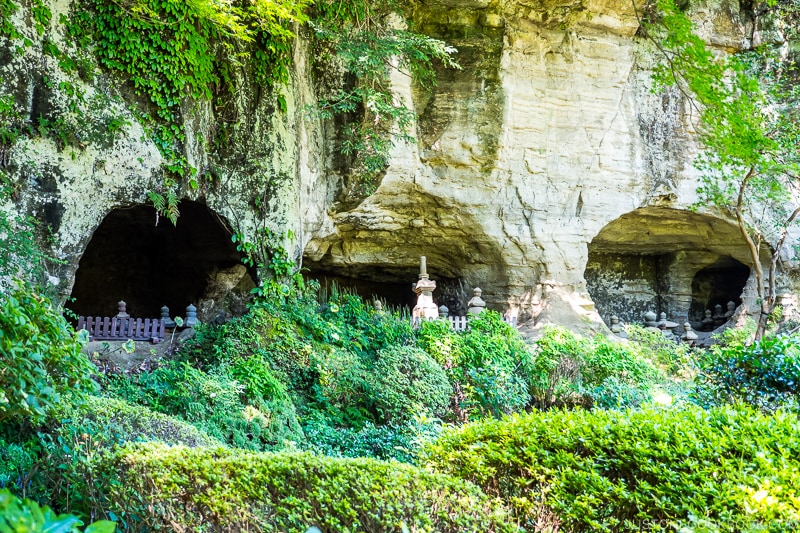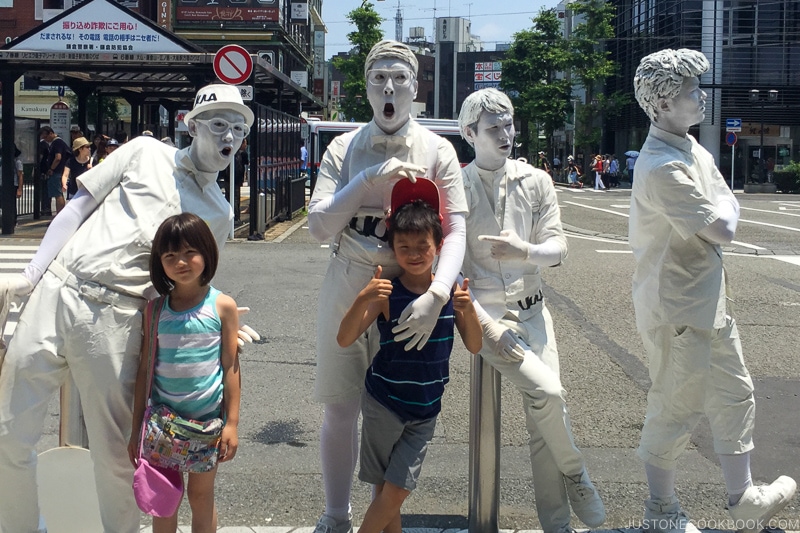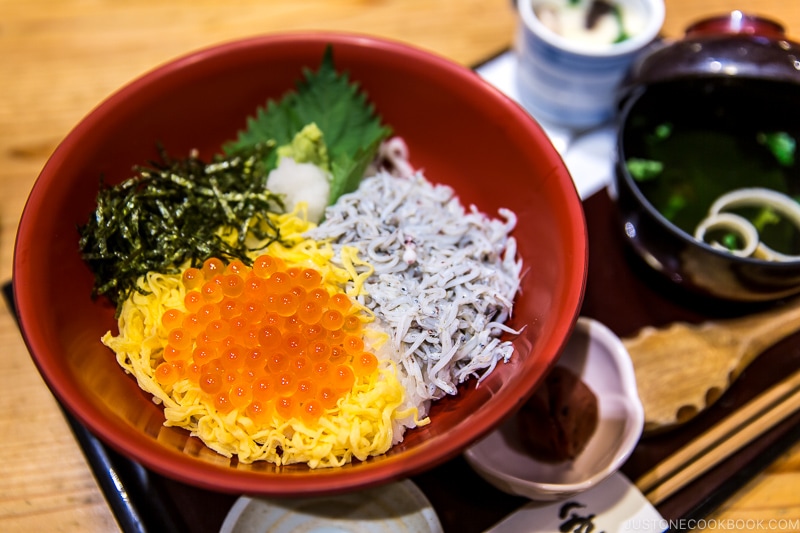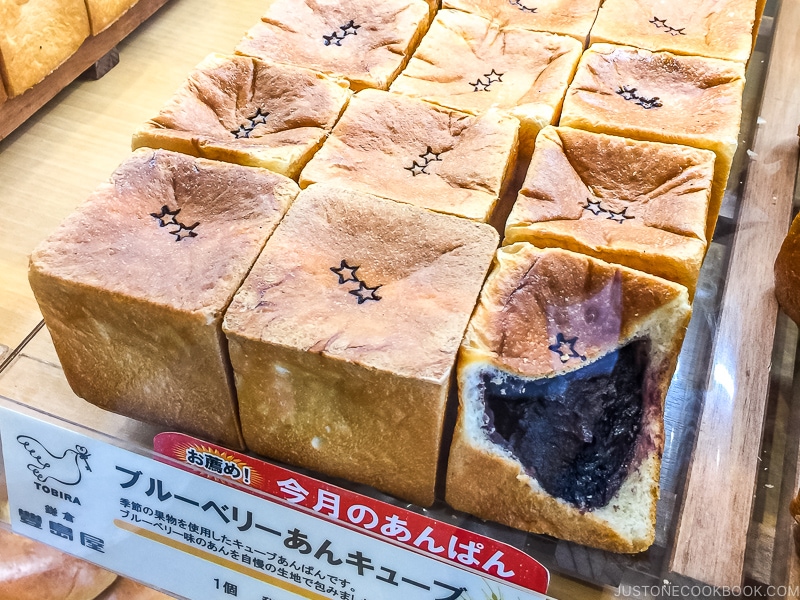Kamakura is one of our family’s favorite destinations in Japan. It’s a short 40 min train ride or by car from Yokohama (Nami’s home in Japan) and offers plenty of sightseeing and things to do. We’ll take you to some of our favorite temples and shrines as well as hidden local gems in this Kamakura travel guide.
Where is Kamakura Japan
Kamakura is located on the southern coast of Kanagawa Prefecture on Sagami Bay. It is southwest of Tokyo and takes about 1 hour by train on Yokosuka line or by car.
Why Visit Kamakura
Kamakura was the political center of Japan for more than a century from 1192 – 1333. It was the home of the first shogun (Minamoto Yorimoto) after taking over power from the imperial family in Kyoto. At the time, religion and politics were intertwined so many of Kamakura’s temples and shrines have ties to the ruling Yoritomo and Hojo families. With a rich history, Kamakura offers an escape from modern Japan. The city is surrounded by a green hilly landscape and borders Sagami Bay to the south. It’s a small town but there are many things to discover. Walking on charming old shopping streets (Komachi Dori), enjoying peaceful sceneries, and praying at historic temples and shrines are some of the activities our family loves. We recommend spending 2 days and 1 night in Kamakura if your time allows. Also, get an early start if you want to avoid the crowds as Kamakura is really popular with visitors.
Kamakura Where to Go
There are many significant temples in Kamakura so it’s very difficult to visit them all on one trip. The recommendations below are some of our favorite spots and most popular for visitors:
Kotokuin 高徳院
One of the iconic images representing Kamakura is the giant sitting Buddha statue (Kamakura Daibutsu). The statue was made in the 1200s and sits in Kotokuin’s courtyard. It is one of the largest sitting Buddha statues in Japan. The Buddha statue is made from bronze, over 40 feet tall (13.35 meters), and weighs 103 tons. The inner part of Buddha is hollowed and visitors can enter and view the statue from the inside. From the 1200s through 1500 there were structures housing the statue. However, they were either destroyed or damaged throughout the time and the statue has been outdoor since then.
Hasedera 長谷寺
Just down the road from Kotokuin is the beautiful and scenic Hasedera temple. The temple is known for a large 30 feet tall Kannon statue (9.18 meters) but there are many other features that make it a worthy destination. Unlike the majority of temples which have a few halls, Hasedera is much larger and has over 10 buildings for religious purposes, a Kannon museum, and a restaurant on site. The walking path at Hasedera is surrounded by lush green moss and the grounds are filled with many different types of colorful flowers and plants. It is known for blooming hydrangea in June. The main feature of the temple is the tall Kannon statue (no photos allowed) but there are many deities worshipped in the other halls. In these halls, visitors can pray for health, business success, and dispel misfortunes. Another signature of the temple is the 50,000 jizo statues throughout the temple grounds. Jizo is believed to protect children and families. The walking path leads visitors up the hill and you can take in the view of Kamakura, surrounding hills, and the beaches nearby.
Kamakura Music Box Museum 鎌倉オルゴール堂
As you exit the entrance of Hasedera, you will see the Kamakura Music Box Museum. Even though it’s called a museum, it’s really a music box specialty shop. However, they do have thousands of music boxes and many of them are unique and difficult to find. Our family ended up buying the robot music box from Studio Ghibli’s Castle in the Sky that played the theme songs from the movie. We absolutely adored the animation movie, so playing the music box at home brings huge smiles to our faces.
Tsurugaoka Hachimangu 鶴岡八幡宮
The next stop is the Tsurugaoka Hachimangu shrine. The shrine was first established in 1063 by Minamoto Yoriyoshi and moved to the current location in the center of the city by his descendent Minamoto Yoritomo around 1180. From Kamakura Station, there’s a long pedestrian walkway called dankazura leading visitors to the shrine. Shops and restaurants lined the walkway and streets on both sides. At the end of the walkway, you’ll see the Tsurugaoka Hachimangu shrine’s tall torii gate. You may be curious about the difference between shrines and temples in Japan. To clarify, shrines are for Shinto religion and temples are for Buddism. There are no photos allowed after entering romon.
Chayakado Restaurant 茶屋かど
After Tsurugaoka Hachimangu, it would be a good time to stop for lunch. While there are many restaurants in Kamakura worthy of a visit, we recommend eating nagashi somen at Chayakado for a unique experience. It is a seasonal offering only available between April through October. What’s nagashi somen? It’s somen noodle flowing down a bamboo pole cut in half and diners would catch it with chopsticks. Diners sit on two sides of a long table with the cut bamboo in front of them sloping downwards. Water is turned on at the higher end creating a stream of cool water and then small bundles of cooked somen will float down the stream towards the lower end. As the noodles flowing down, you would catch the somen with chopsticks and then dip in the tororo tsuyu sauce. It is really fun and refreshing to eat on a hot day. Somen is one of our son’s favorite foods and we really enjoyed the experience. The price includes all you can eat somen. The restaurant also offers tempura and a few sides along with ice-cold beer. It’s very difficult to find nagashi somen restaurants in Japan now and there are only a few left in the entire Tokyo area. So don’t miss the opportunity to try!
Kenchoji 建長寺
Just a short walk from Chayakado Restaurant is Kenchoji, one of the most famous zen temples in Japan. There is a hierarchy for Buddhist temples called the 5 mountain system (we won’t get into the details here). In Japan, 5 temples each in Kyoto and Kamakura are at the very top of this hierarchy. In Kamakura, the first rank temple is Kenchoji. The construction of the Kenchoji temple was completed in 1253 and laid out in a Chinese temple format. Kenchoji is known as the temple that inspired the vegan soup, kenchinjiru. The Ryuoh-den in the back has a beautiful Japanese garden.
Tenshinan 点心庵
Near the entrance of Kenchoji is Tenshinan Restaurant. The restaurant serves popular Japanese food such as curry, shirasu, soba, omurice, and kenchinjiru. We stopped after visiting Kenchoji for an afternoon snack. In the back of the restaurant, there is a tatami room for customers to practice zen and enjoy the garden view through a circular gateway.
Hokokuji 報国寺
The last stop in this Kamakura travel guide is Hokokuji, known for its bamboo forest. It’s a bit far from Kenchoji so hop into a cab if you want to save time. Otherwise, it’s a 30 min walk. The temple’s history goes back to 1334. It was established to commemorate Ashikaga Ietoki (the Ashikaga clan ruled Japan from 1333 to 1573). Hokokuji is known for the beautiful bamboo forest in the back of the temple. Visitors can walk through the bamboo forest and enjoy the peaceful scenery. There are some caves carved into the hillside and it is said some of the Ashikaga family’s ashes are buried inside.
Other Things to do in Kamakura
We hope you enjoy the Kamakura Travel Guide and there are many more activities you can do besides what we’ve shared. If you are interested in visiting more temples, consider the prominent Engakuji or Jomyoji. Up for something a bit unusual? Check out Zeniarai Benzaiten Shrine and learn about its money cleansing ritual. Explore local restaurants and bakeries as you never know what you’ll discover. If you’ve been to Kamakura, what are some of your favorite sites and activities? Share with us in the comment box below! Thank you as always for reading our travel post.
